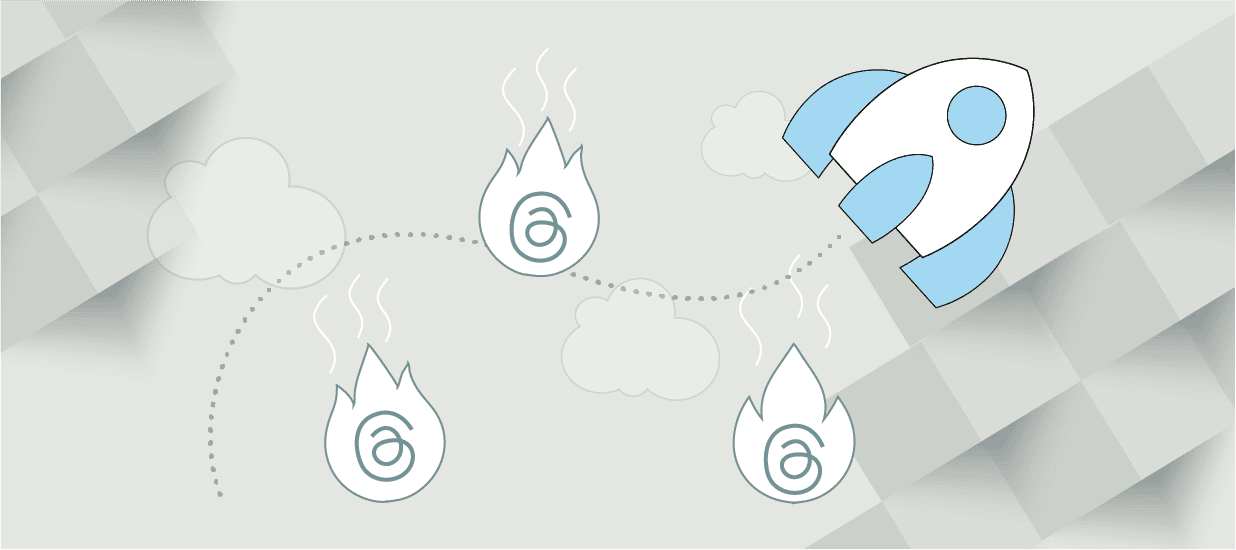What does it mean to innovate?
Many organizations confuse innovation with invention.
Invention is generally defined as the initial creation or discovery of a product or a process.
Innovation, on the other hand, occurs when somebody improves on or makes a significant contribution to an existing product, process or service. Innovation is also when someone solves a problem that everyone knows about, but hasn’t been able to solve.
It is less about new products and more about enabling technologies or ways of doing things.
For businesses, this doesn’t mean leaping off a cliff and launching a product or feature even if there is no verified market problem.
Instead, it’s asking the question, “Is there some way to solve these problems we’ve all known about, but couldn’t solve, or is there a new problem emerging in the markets we serve?”
Beyond knowing what it means to innovate, we must also know where to find brilliant ideas. The secret is listening to the right sources at the right time. This article gives you three valuable sources that you should begin listening to for successful innovation ideas.
1. Listen to Leadership: Innovation Begins with Alignment
Most organizations want to innovate. But most aren’t executing market research and funding the experiments that actually lead to innovation.
Here’s an example. Imagine a group of executives telling their organization, “We need to be more innovative. We need to find the next big thing.” So the product managers start delivering idea after idea, but the leadership never takes action. Instead, the executives respond with, “We have to solve this first, or our biggest customer is actually looking for this specific feature.”
The problem with this scenario is when you invest in creating minor enhancements to existing products but all your energy is directed toward innovation, you’re doing a disservice to both activities.
There is absolutely nothing wrong with focusing on improving products for existing customers. Of course, it carries a certain level of risk, but so does innovation.
What is wrong, not to mention wasteful, is saying one thing (we want innovation) but then asking for something else entirely (improve this feature).
Alignment begins with a common language. It helps to ask the question, “What does a big idea mean to you?”
Then, listen to what the leadership has to say about the topic. Some organizations might define a “big idea” as one that brings in an additional $5 million and others it might mean $50 million.
Sometimes, innovation is about ideas that serve a specific segment or reach a new industry.
Either way, creating that focus is going to help everyone do a better job.
2. Listen to New Sources: Moving Beyond the Persona to Innovate
Personas are valuable. They’re the best way to crystallize a common view of buyers and users for internal teams. It’s just that you don’t get the whole picture from personas.
We always start our work by understanding personas and their problems because that’s the best strategy.
But, if you want to innovate, you’re going to need to listen to other people in the market and listen for different things.
Most organizations tend to over-listen to users and existing customers. The problem with this approach is those are the people who are most invested in the status quo.They’re the ones who want things to be incrementally improved. There is nothing wrong with this approach, but it is not innovative.
Make no mistake: listening to innovate is about solving problems for the market, but you probably need to talk to some different people and ask them some different things.
Instead of talking directly to the users, talk to the leaders of the organizations they work for.
For example, you might sell products to law firms. The users of the products might be associates, paralegals and legal assistants. To innovate, we might need to speak to managing partners, IT directors and the marketing department.
You should also explore what you can learn from regulators, associations and industry experts. Also, look toward other industries for inspiration. Take a few minutes to identify what element changed from disruptive innovation and see if the same strategy could work in your industry or for your product.
It might spark conversation about how you could change pricing, product packaging, distribution, etc., to find the next big idea.
In some ways, these are still personas. However, they might not be the users or the buyers. It might be time to make a leader persona or a functional persona.
When we say thinking beyond the persona, it’s not about the persona as a tool. It’s about considering personas outside your current ecosystem of users and buyers.
When we have conversations with these new personas we are going to ask them different questions than we’d ask our users or buyers. For example, “How are they going to expand their business in the next three years?”
Innovative ideas might also come from observing and listening to laws, cultural shifts, assumptions about how people can buy things, evolving communication channels and changing market priorities.
3. Listen to Old Problems: Looking Beyond Emerging Opportunities
One of the easiest ways to get leadership buy-in to fund innovative ideas is when the problem is already known but there hasn’t been an effective solution—yet.
There might be new tools that could help you solve your market problems better.
Back to the example in the legal field. Cloud computing opened up a massive opportunity for new software to solve known problems. Specifically, solo law practitioners could access tools that were too expensive previously.
But, a word of caution: We can sometimes over-focus on new technology.
Sometimes, the very best innovation comes with new pricing or delivery models. This is exciting because you do not have to build anything to disrupt a market.
Entire industries have experienced massive disruption because innovators saw the market and they figured out what they were ready to do in terms of buying, paying, receiving and using the same products they’re already purchasing.
A notorious example is Netflix and Blockbuster. When Netflix started, they sold the same product as Blockbuster (DVDs), but they priced and delivered it differently.
Another example is Slack. They offered freemium projects to individuals in groups that work in organizations, but eventually, those individuals went to the organization because they needed to unlock additional features only available in the paid versions. This innovation was how they targeted users. They approached buy-in from the bottom up instead of the top down.
Remember, Market Buy-In Takes Time
Sometimes we get excited about an idea and begin building. But successful innovation only happens when the market adopts it and loves it.
Innovation should still be based on discovery and validation. Consider a launch that is multiphase with things like awareness, perception and trails.
When we take this approach, we can get to market when users are ready for us and keep our organization aligned.
Also, it helps to communicate early in the process that while innovation takes time to launch, it also takes time for it to be adopted by the market. Building in expectations of when to see ROI will prevent leaders from being disappointed about results not flowing in soon enough.
Consider partnering with the finance department to make a case of when it’s normal to see revenue from innovation based on previous big launches. That data will put leaders at ease.
The Key to Success: Prioritization
Product managers are responsible for gathering, organizing, analyzing, prioritizing, and articulating market problems.
This requires a lot of work and Focus.
Generally, when we’re talking about prioritization, we mean outputs of features. But, it’s equally important to prioritize the inputs, which is where we are going to spend the time on research, because we can’t talk to everybody.
The good news is that you can invest a little work each week on innovation and get to see change over time. This approach is better than trying to do a giant research project once or twice a year.
Continue Learning
Focus is a course that shows you how to find opportunities in your market’s problems, score them objectively and identify where your company’s strengths intersect with market values.
Then, you’ll learn how to use that knowledge and market data to successfully and credibly sell your strategies internally.
Enroll today for this in-person or live-online experience.
Author
-

Diane Pierson, a seasoned professional with 38 years of experience, is a distinguished Marketing & Product Strategist. With a rich background at companies like D&B, LexisNexis, and Pragmatic Institute, she excels in strategic product planning, go-to-market strategy, and organizational transformation. Diane's expertise spans product management and marketing best practices, as well as organizational alignment and team building. For questions or inquiries, please contact [email protected].
View all posts







